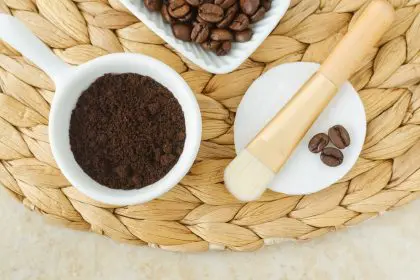We’ve all been there, standing in front of the bathroom mirror, nose pressed close, examining those tiny dots scattered across our T-zone. In a moment of frustration, you might reach for that intense scrub or strong chemical exfoliant promising to blast away every trace of oil and debris. But what if those harsh products are actually making things worse?
Why your pores get clogged in the first place
Before diving into solutions, it helps to understand the enemy. Pores become clogged through a perfect storm of factors that happen right on the surface of your skin.
Your skin naturally produces sebum, an oily substance that helps keep skin moisturized and protected. When you’re producing the right amount, sebum is your friend. But factors like hormones, genetics, diet, and stress can kick production into overdrive.
Dead skin cells should naturally shed and wash away. But sometimes they get sticky and stubbornly cling to the skin surface, mixing with excess oil and creating a paste-like substance that nestles into your pores.
Environmental pollutants, makeup residue, and even certain skincare ingredients can join this unfortunate mixture, creating the perfect recipe for clogged pores that eventually turn into blackheads, whiteheads, or inflamed pimples.
Harsh products strip your skin’s natural moisture barrier, and your skin often responds by producing even more oil to compensate. This starts a frustrating cycle that can make clogged pores a persistent problem rather than an occasional annoyance.
The gentle approach to clear pores
Clearing congested pores doesn’t require nuclear-strength products. Gentle, consistent methods often yield better results without the redness, irritation, and rebound oil production that harsh treatments cause.
Steam your way to clearer skin
Facial steaming is perhaps the most underrated method for naturally loosening the gunk in your pores. The warm vapor softens the hardened oil and debris, making them easier to remove with gentle cleansing afterward.
You don’t need a fancy facial steamer, though they’re nice to have. Simply boil water, pour it into a heat-safe bowl, and position your face about 12 inches above the steam with a towel draped over your head to create a steam tent. Five to seven minutes is plenty.
Add a few drops of tea tree or lavender essential oil to the steaming water for additional antibacterial benefits, but skip this step if you have very sensitive skin.
Follow steaming with your normal gentle cleanser while your skin is still warm and supple. The combination of steam and mild cleansing often removes more debris than harsh scrubbing ever could.
Oil dissolves oil
It might seem counterintuitive, but one of the most effective ways to remove excess oil and debris from pores is with more oil. The science is simple. Like dissolves like, meaning oils can dissolve and dislodge the hardened sebum stuck in your pores.
Oil cleansing involves massaging a plant-based oil or oil blend onto dry skin for several minutes, allowing it to dissolve the buildup in your pores. The warmth from your hands helps the process along.
Jojoba oil closely resembles human sebum, making it particularly effective for this method. Other good options include hemp seed oil for acne-prone skin or rosehip oil for more mature skin types.
After massaging for 2-3 minutes, place a warm, damp washcloth over your face for 30 seconds to open pores further. Then gently wipe away the oil, which now contains the dissolved debris from your pores.
Some people find oil cleansing alone is sufficient, while others follow with a gentle water-based cleanser to remove any residual oil. Either approach works well depending on your skin type.
Clay, the gentle deep cleaner
Clay masks draw impurities from pores without harsh scrubbing or irritating chemicals. They work through a simple absorption process, pulling excess oil and debris to the surface as they dry.
Kaolin clay is the gentlest option, suitable even for sensitive skin types. It cleanses effectively without overly drying the skin. Bentonite clay provides stronger detoxifying properties for oilier skin types, while French green clay offers a middle ground.
The key to keeping clay masks gentle is never letting them dry completely. Once a mask becomes flaky or feels tight on your skin, it starts drawing moisture from skin cells rather than just absorbing excess oil. Apply a thicker layer than you think necessary and rinse when it’s still slightly tacky.
Mix clay with hydrosol or aloe vera juice instead of water for added benefits. Rosewater soothes while witch hazel provides mild astringent properties. Add a drop of honey for its humectant and antibacterial qualities.
The power of proper hydration
Perhaps counterintuitively, one of the best ways to prevent clogged pores is keeping your skin properly hydrated. Well-hydrated skin produces less excess oil and sheds dead cells more efficiently.
Look for lightweight, non-comedogenic moisturizers containing humectants like hyaluronic acid or glycerin. These ingredients draw water into the skin without adding heaviness or clogging pores.
For acne-prone skin, moisturizers with niacinamide help regulate oil production while strengthening the skin barrier. This vitamin also has anti-inflammatory properties that reduce redness around existing clogs.
Apply moisturizer to slightly damp skin to lock in hydration. This simple step makes a remarkable difference in how well your skin absorbs the product and maintains hydration throughout the day.
Gentle exfoliation that actually works
Exfoliation remains important for preventing clogged pores, but harsh physical scrubs can create micro-tears in the skin and actually worsen inflammation.
Enzyme exfoliants use fruit-derived enzymes like papain from papaya or bromelain from pineapple to dissolve dead skin cells without any scrubbing required. These gentle exfoliants work well for sensitive skin types that can’t tolerate even mild acids.
For slightly stronger exfoliation, look to polyhydroxy acids like gluconolactone or lactobionic acid. These larger molecule acids provide similar benefits to glycolic acid but with significantly less irritation potential.
Even with gentle exfoliants, frequency matters. Most skin types benefit from exfoliating just 2-3 times weekly. More frequent exfoliation often leads to irritation and barrier damage, triggering the oil-overproduction cycle.
The diet connection
What you put in your body affects what comes out through your pores. While the relationship between diet and skin remains complex, certain nutritional approaches appear to help reduce pore congestion from the inside out.
Foods rich in omega-3 fatty acids help regulate oil production and reduce inflammation. Think fatty fish, walnuts, and chia seeds as skin-friendly additions to your diet.
Zinc-rich foods like pumpkin seeds, lentils, and cashews support skin healing and regulate hormone levels that can trigger excess oil production.
Antioxidant-rich fruits and vegetables help fight oxidative stress, a factor in both aging and pore congestion. Berries, dark leafy greens, and colorful vegetables provide these skin-protecting compounds.
Staying well-hydrated helps your skin function optimally from the inside out. Aim for at least eight glasses of water daily, more if you’re active or in dry environments.
When to be patient and when to see a professional
Gentle approaches require something that harsh treatments don’t. patience. Many people give up on gentler methods because they don’t see overnight results, but consistent application typically yields better long-term outcomes with fewer side effects.
Give any new gentle routine at least 4-6 weeks before judging its effectiveness. Your skin cell turnover cycle takes approximately 28 days, meaning a full month is needed to see how treatments affect newly forming cells.
If gentle methods aren’t making a difference after this timeframe, consider consulting a dermatologist. Sometimes clogged pores indicate underlying conditions that benefit from professional treatment.
While over-the-counter products have their place, prescription options like topical retinoids or custom formulations might provide the breakthrough you need without resorting to overly harsh retail products.
Your journey to clearer pores doesn’t have to involve punishment or pain. By working with your skin’s natural processes rather than against them, you’ll likely discover that the gentlest approach yields the most beautiful results.













